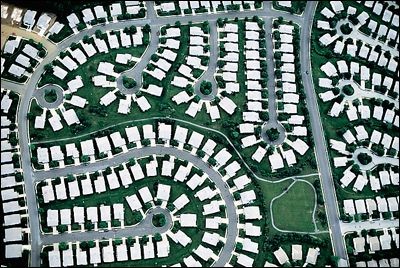The Reason Foundation, a free-market think tank, is not always a transportation reformer’s best friend. Its scholars gave Florida Gov. Rick Scott inaccurate advice he then used to justify killing high-speed rail in his state. They want to prevent the gas tax from funding “peripheral” programs like transit and active transportation. But Reason Foundation experts have teamed up with Transportation for America and Taxpayers for Common Sense to champion seven cost-effective and eminently “reasonable” strategies for improving transportation outcomes even in the midst of a budget crisis.

Leaders of the three groups briefed an audience on Capitol Hill today about the points of unity among them. Obviously, there were many issues they couldn’t come to consensus on, but it’s worth spotlighting the things even these disparate groups agree on. And it’s worth asking: if they’re so non-controversial, why aren’t they happening everywhere?
The seven innovations being highlighted by Transportation for America, Taxpayers for Common Sense, and the Reason Foundation are:
1. Transportation scenario planning – Rather than planning for a future just like the present, metros and states can use a more dynamic planning process, often used by the military but increasingly adopted by policy-makers, which brings together a variety of community stakeholders to envision how the future could look under a variety of possible scenarios. They come up with a “preferred scenario” and set policies and goals oriented toward achieving that scenario.
2. High Occupancy Toll lanes – Sometimes derided as “Lexus lanes,” these lanes are reserved for carpoolers but are also open to those willing to pay for a quicker trip with less congestion. HOT lanes can use dynamic pricing to change the cost of driving on the lanes based on demand to keep congestion on those lanes low enough to guarantee a 45 mile-per-hour speed, according to Shirley Ybarra of the Reason Foundation, Virginia’s Secretary of Transportation from 1998 to 2002.
3. Bus Rapid Transit – Latin America has pioneered a host of innovative ways to make bus service faster, more reliable, and more pleasant. The buses travel in their own designated lane, preferably physically separated from other traffic, to keep from getting stuck in the same traffic jams as everybody else. The stations often are more elaborate platforms, with fares collected at the station, to speed the boarding process. BRT is scalable, allowing cities to test the waters with a modest system and then improving stations, real-time bus tracking, fare collection systems, and lane separations as the system matures.
4. Intelligent Transportation Systems – Everyone seems to agree that E-ZPass (and even boothless “open road tolling”), traffic light optimization, electronic transit fare payments, and real-time transit tracking are improvements cities and states can make right now to get the most out of their existing capacity, potentially staving off the perceived need to expand. Despite the consensus on the utility of these tools, however, states are still slow to implement them, so let this be a tri-partisan push for them to get on it. A 2005 GAO report found that ITS reduced delays by 9 percent where it was implemented.
5. Inter-city Buses – Libertarians love inter-city buses because they use virtually no subsidies (except for those that build and maintain the roads they drive on). Operators like BoltBus and MegaBus offer clean and comfortable rides with wi-fi service. Inter-city buses were the fastest-growing transportation mode in 2010. Erich Zimmerman of Taxpayers for Common Sense added that bus service does a good job of connecting rural areas, too. About 78 percent of rural Americans have access to inter-city bus travel, he said.
6. Telework – We can all get behind this one, right? Doing your part to reduce vehicle-miles-traveled by working in your pajamas from your easy chair? Ybarra says educating employers is always the challenge – employees get it intrinsically. Once managers are convinced workers will be equally – or more – productive at home, they tend to embrace the idea.
7. Local street connectivity – Call it Operation Cul-de-Sac. Suburban growth models did away with traditional urban grids that allow easy access from one place to another through a variety of routes. In their place, they built high-traffic arterial roads that connect little cul-de-sac communities that don’t connect any other way. This puts so much pressure on the arterials that people end up using interstates to go just a couple of exits to take the kids to school, said James Corless of Transportation for America. And that keeps the interstates from efficiently performing their primary job: moving people between states. Besides, when the only roads that go anywhere are high-speed arterials without sidewalks or bike lanes, your only option is to drive, even for short trips. Better just to have functional grids that give people more options of how to get from point A to point B.
As pressure grows on state and city budgets, these cost-effective measures will become more and more essential to keep the transportation system functioning. The federal government has made it clear that it can’t be counted on to fund transportation at a level that would even keep it in a state of working condition, so low-cost ways to improve performance will be the saving grace of states and metros that want to do more than tread water until Congress has a change of heart and decides to dedicate new revenues.





